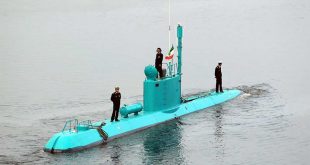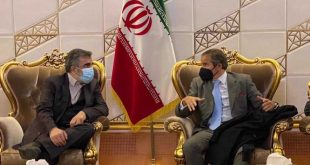“The operations conducted on Tuesday by the Yemeni army’s drone unit was a unique development with several messages; the most important message is that the people who did not have any weapons but Kalashnikov are today building drones which penetrate into the depth of the Saudi territories,” Yemeni Deputy Information Minister Fahmi al-Yousefi said.
He added that the operation was a response to the Monday massacre of the Yemeni civilians in Sa’ada, noting that it had a message for the US forces in the Persian Gulf and a message for the Saudis that “today they are within the range of our weapons and the US fleet cannot support the al-Saud”.
Al-Yousefi said that the countdown for the Saudis has started as Yemeni drones are able to fly deep into the oil rich country and target its installations and facilities.
Seven drones of Yemeni armed forces carried out attacks against vital Saudi facilities in response to the Riyadh regime’s military campaign against the war-ravaged nation, which has claimed the lives of tens of thousands of Yemenis since the start of war in 2015.
The extensive military operation was conducted in retaliation for Saudi Arabia’s aggression and siege of the impoverished Arabian Peninsula state, a Yemeni military source told Al-Masirah TV on Tuesday, but did not specify the targets or the time of the strikes.
The official stated that Yemeni fighters stand ready “to execute more significant and tough strikes as long as the siege continues”.
Al-Alam news network, meanwhile, claimed that the goals have likely been oil-related and economic targets in the Red Sea port of Yanbu in the Al-Madinah province in Western Saudi Arabia.
Citing Yemen’s defense ministry, Al-Mayadeen TV Chanel reported that seven drones have penetrated deep into Saudi Arabia and targeted large-scale vital facilities.
Member of the political bureau of Ansarullah movement Mohammad al-Bukhaiti told Al-Jazeera Arabic that the attacks occurred in the early hours of Tuesday morning, saying he expects the targets to be oil installations, but stated that he has no specific information on the details of the strikes.
Hours later, Saudi Arabia’s Presidency of State Security confirmed the report of the Yemeni drone attacks on the kingdom facilities, saying two oil pumping stations belonging to Aramco company in the provinces of Al-Duwadimi and Al-Afif “were partially targeted”.
Saudi Arabia’s Energy Minister Khalid al-Falih also noted that fire broke out at one station between 6:00 am and 6:30 am local time on Tuesday, saying, however, it caused “limited damage”.
He added that Aramco has stopped the pumping operation, where the damage is being assessed, to repair the station and restore the situation to the normal state.
Saudi Arabia and a number of its regional allies launched a devastating campaign against Yemen in March 2015, with the aim of bringing the government of former Yemeni President Abd Rabbuh Mansur Hadi back to power and crushing the Ansarullah movement. The Riyadh-led aggression has so far killed at least 20,000 Yemenis, including hundreds of women and children.
Despite Riyadh’s claims that it is bombing the positions of the Ansarullah fighters, Saudi bombers are flattening residential areas and civilian infrastructures. Weddings, funerals, schools and hospitals, as well as water and electricity plants, have been targeted, killing and wounding hundreds of thousands.
France, the United States, the Uinted Kingdom and some other Western countries have faced criticisms over arms sales to the Saudi Arabia and the UAE, whose aggression against Yemen has affected 28 million people and caused what the United Nations calls “one of the worst humanitarian crises in the world”. According to the world body, Yemen is suffering from the most severe famine in more than 100 years.
A UN panel has compiled a detailed report of civilian casualties caused by the Saudi military and its allies during their war against Yemen, saying the Riyadh-led coalition has used precision-guided munitions in its raids on civilian targets
 WILAYAH NEWS VOICE OF THE GLOBAL AWAKENING
WILAYAH NEWS VOICE OF THE GLOBAL AWAKENING






